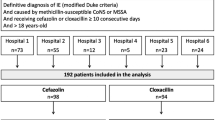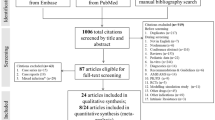Abstract
Background
The isolation rate and drug resistance rate of Acinetobacter baumannii (A.baumannii) have increased over the years, which has become one of the main causes of infection and death in intensive care unit (ICU) patients. Analysis of the distribution characteristics, drug resistance and influencing factors of A.baumannii in ICU could provide basis and reference for the infection prevention and clinical treatment.
Methods and Results
In this study, patients diagnosed with A.baumannii infection in ICU from January 2020 to December 2021 were selected. Samples of patients were collected for bacterial culture, drug sensitivity test analysis and drug resistant gene detection of A.baumannii. A total of 197 strains of A.baumannii were cultured in 2021, which was 18 strains more than in 2020. The specimens were mainly from lower respiratory tract secretions, and the isolated strains were multi-drug resistant. The resistance of isolates to tobramycin, gentamicin, and trimethoprim-sulfamethoxazole in 2021 showed a significant increase compared to 2020, while there were no significant differences observed in other resistance changes. The prevalence of multi-drug resistant A.baumannii in ICU remains high. Among them, all imipenem-resistant A.baumannii strains carried OXA-23 gene.
Conclusion
Clinical treatment should use antibiotics reasonably based on the characteristics of bacterial resistance, and strengthen the prevention and control of hospital infection, pay more attention to the disinfection and isolation to reduce the risk of cross infection.
Similar content being viewed by others
References
Antunes LC, Visca P, Towner KJ (2014) Acinetobacter baumannii: evolution of a global pathogen. Pathog Dis 71:292–301. https://doi.org/10.1111/2049-632X.12125
Sebeny PJ, Riddle MS, Petersen K (2008) Acinetobacter baumannii skin and soft-tissue Infection associated with War trauma. Clin Infect Dis 47:444–449. https://doi.org/10.1086/590568
Sahl JW, Johnson JK, Harris AD et al (2011) Genomic comparison of multi-drug resistant invasive and colonizing Acinetobacter baumannii isolated from diverse human body sites reveals genomic plasticity. BMC Genomics 12:291. https://doi.org/10.1186/1471-2164-12-291
Thom KA, Hsiao WW, Harris AD, Stine OC, Rasko DA, Johnson JK (2010) Patients with Acinetobacter baumannii bloodstream Infections are colonized in the gastrointestinal tract with identical strains. Am J Infect Control 38:751–753. https://doi.org/10.1016/j.ajic.2010.03.005
Howard A, O’Donoghue M, Feeney A, Sleator RD (2012) Acinetobacter baumannii: an emerging opportunistic pathogen. Virulence; 3:243 – 50. https://doi.org/10.4161/viru.19700
Wong D, Nielsen TB, Bonomo RA, Pantapalangkoor P, Luna B, Spellberg B (2017) Clinical and pathophysiological overview of Acinetobacter Infections: a Century of challenges. Clin Microbiol Rev 30:409–447. https://doi.org/10.1128/CMR.00058-16
Martinez-Martinez L, Calvo J (2010) [The growing problem of antibiotic resistance in clinically relevant gram-negative bacteria: current situation]. Enferm Infecc Microbiol Clin; 28 Suppl 225–31. https://doi.org/10.1016/S0213-005X(10)70027-6
Hsueh PR, Teng LJ, Chen CY et al (2002) Pandrug-resistant Acinetobacter baumannii causing nosocomial Infections in a university hospital, Taiwan. Emerg Infect Dis 8:827–832. https://doi.org/10.3201/eid0805.020014
Nasr P (2020) Genetics, epidemiology, and clinical manifestations of multidrug-resistant Acinetobacter baumannii. J Hosp Infect 104:4–11. https://doi.org/10.1016/j.jhin.2019.09.021
Lin MF, Lan CY (2014) Antimicrobial resistance in Acinetobacter baumannii: from bench to bedside. World J Clin Cases 2:787–814. https://doi.org/10.12998/wjcc.v2.i12.787
Lee CR, Lee JH, Park M et al (2017) Biology of Acinetobacter baumannii: Pathogenesis, Antibiotic Resistance mechanisms, and prospective treatment options. Front Cell Infect Microbiol 7:55. https://doi.org/10.3389/fcimb.2017.00055
Fournier PE, Richet H (2006) The epidemiology and control of Acinetobacter baumannii in health care facilities. Clin Infect Dis 42:692–699. https://doi.org/10.1086/500202
Playford EG, Craig JC, Iredell JR (2007) Carbapenem-resistant Acinetobacter baumannii in intensive care unit patients: risk factors for acquisition, Infection and their consequences. J Hosp Infect 65:204–211. https://doi.org/10.1016/j.jhin.2006.11.010
Weinstein MP, Clinical, Laboratory Standards I (2019) Performance standards for antimicrobial susceptibility testing, 30th edn. ed: Clinical and Laboratory Standards Institute
Chang Y, Luan G, Xu Y et al (2015) Characterization of carbapenem-resistant Acinetobacter baumannii isolates in a Chinese teaching hospital. Front Microbiol 6:910. https://doi.org/10.3389/fmicb.2015.00910
Doi Y, Murray GL, Peleg AY (2015) Acinetobacter baumannii: evolution of antimicrobial resistance-treatment options. Semin Respir Crit Care Med 36:85–98. https://doi.org/10.1055/s-0034-1398388
Mugnier PD, Poirel L, Naas T, Nordmann P (2010) Worldwide dissemination of the blaOXA-23 carbapenemase gene of Acinetobacter baumannii. Emerg Infect Dis 16:35–40. https://doi.org/10.3201/eid1601.090852
Aboshakwa AM, Lalla U, Irusen EM, Koegelenberg CFN (2019) Acinetobacter baumannii Infection in a medical intensive care unit: the impact of strict Infection control. Afr J Thorac Crit Care Med 25. https://doi.org/10.7196/AJTCCM.2019.v25i1.239
Garza-Gonzalez E, Camacho-Ortiz A, Ponce-de-Leon A et al (2023) Bacterial incidence and drug resistance from pathogens recovered from blood, cerebrospinal and pleural fluids in 2019–2020. Results of the Invifar network. PeerJ; 11:e14411. https://doi.org/10.7717/peerj.14411
Wei Z, Zhou S, Zhang Y et al (2022) Microbiological characteristics and risk factors on prognosis associated with Acinetobacter baumannii bacteremia in general hospital: a single-center retrospective study. Front Microbiol 13:1051364. https://doi.org/10.3389/fmicb.2022.1051364
Lin MF, Lin YY, Lan CY (2019) A method to assess influence of different medical tubing on biofilm formation by Acinetobacter baumannii. J Microbiol Methods 160:84–86. https://doi.org/10.1016/j.mimet.2019.03.023
Urban C, Segal-Maurer S, Rahal JJ (2003) Considerations in control and treatment of nosocomial Infections due to multidrug-resistant Acinetobacter baumannii. Clin Infect Dis 36:1268–1274. https://doi.org/10.1086/374847
Acknowledgements
Thanks to our colleagues in the infection laboratory for their assistance.
Funding
This work was supported by Dazhou Science and Technology Bureau (21ZDYF0023) and Sichuan Medical Association (Q21062).
Author information
Authors and Affiliations
Contributions
S.Z.: contributed to study design; B.Z.: contributed to study management and execution; C.L., X.S.: served as the medical advisors. All authors contributed to the final version of the manuscript.
Corresponding author
Ethics declarations
Ethical approval
This study was conducted in accordance with the principles of the Declaration of Helsinki. This study was approved by the ethics committee of the hospital. As this is a retrospective study, the Ethics Committee is exempted from signing informed consent.
Competing interests
The authors declare no competing interests.
Additional information
Publisher’s Note
Springer Nature remains neutral with regard to jurisdictional claims in published maps and institutional affiliations.
Electronic supplementary material
Below is the link to the electronic supplementary material.
Rights and permissions
Springer Nature or its licensor (e.g. a society or other partner) holds exclusive rights to this article under a publishing agreement with the author(s) or other rightsholder(s); author self-archiving of the accepted manuscript version of this article is solely governed by the terms of such publishing agreement and applicable law.
About this article
Cite this article
Zhao, S., Zhang, B., Liu, C. et al. Acinetobacter baumannii infection in intensive care unit: analysis of distribution and drug resistance. Mol Biol Rep 51, 120 (2024). https://doi.org/10.1007/s11033-023-09144-3
Received:
Accepted:
Published:
DOI: https://doi.org/10.1007/s11033-023-09144-3




